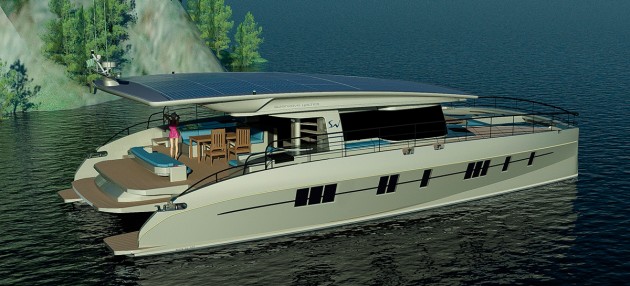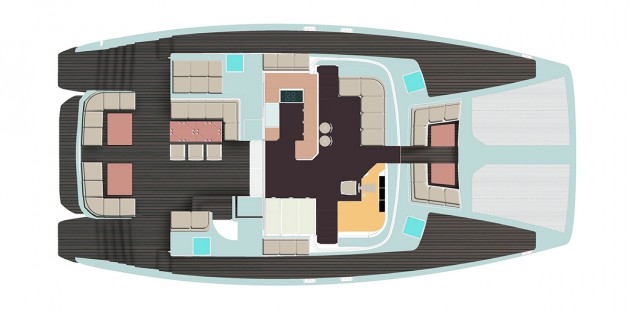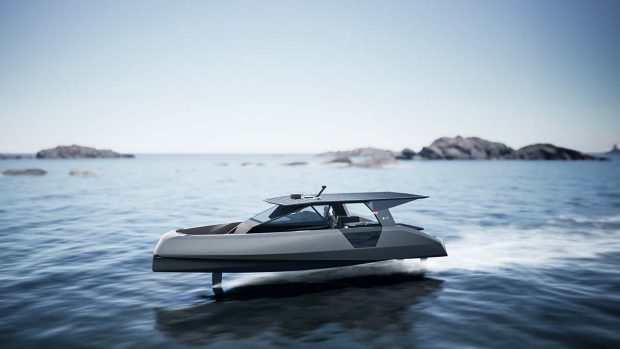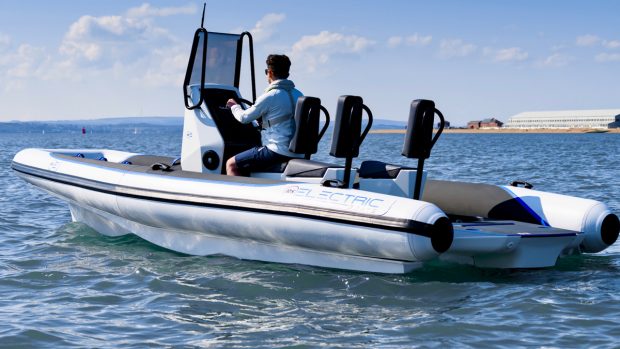Solarwave has fully embraced electric technology and is bringing it to fruition in a 62-footer, writes Dave Marsh
Increasing the efficiency
The first two 62s off the line, which cost around €2m, are both powered by a pair of 60kW motors. With these, Solarwave estimates a top speed greater than 10 knots and a cruising speed around 6-8 knots.
To decrease drag and increase manoeuvrability, steerable sail-drives are fitted instead of shafts. These units have been utilised in commercial craft for years, and are beefy enough to cope with the (currently) largest twin 150kW electric motor option.
 The other way Solarwave has maximised the 62’s efficiency is to reduce weight using high-tech construction.
The other way Solarwave has maximised the 62’s efficiency is to reduce weight using high-tech construction.
Claims of ‘high-tech’ are frequently no more than annoying hyperbole, but Solarwave’s construction – an epoxy resin infused carbon composite structure with honeycomb cored furniture throughout – truly is high tech.
It explains why the 62 weighs 18 tonnes (light), compared with the Lagoon 630’s 35 tonnes. The boat obviously relies on an indeterminate measure of sun, although given the prototype’s operational record that does not seem difficult to achieve.
If the sun did disappear completely, with the recommended 84 kWh battery bank, Solarwave estimates the 62 would be able to cruise at 7 knots for about ten hours before the battery bank was depleted enough to require the ‘range extender’. Slow just a little to 6 knots and that time extends significantly.
 Solarwave understands that some owners will want more speed. So it also has a parallel hybrid version that incorporates 20kW electric motors between the gearbox and the diesel engines, which is straightforward tried and tested technology in the Greenline mould.
Solarwave understands that some owners will want more speed. So it also has a parallel hybrid version that incorporates 20kW electric motors between the gearbox and the diesel engines, which is straightforward tried and tested technology in the Greenline mould.
Because the 62 is so light, it’s not easy to accurately predict the higher speeds, and Solarwave was refreshingly cautious in wanting to wait until the first 62s hit the water before committing itself.
Lagoon’s 630 did 16 knots with twin 300hp Volvos, so certainly mid-20s seems possible with the same power, but whether the 62 could hit the magic 30 remains to be seen.
There are further advantages to solar panel powered, all-electric propulsion than zero emissions and the lack of noise and vibration.
 Combining a slender catamaran with infinitely variable electric motors means that the boat won’t have a natural ‘groove’ as some boats do, instead owners will be able cruise at precisely their speed of choice, from zero to flat out.
Combining a slender catamaran with infinitely variable electric motors means that the boat won’t have a natural ‘groove’ as some boats do, instead owners will be able cruise at precisely their speed of choice, from zero to flat out.
Notwithstanding provisioning and the necessary amount of sun to ‘fuel’ the solar panels, with the watermaker on board the 62 effectively becomes autonomous with a potentially unlimited range. At zero fuel cost! For intrepid long distance cruisers, that has to be hugely appealing.
Contact:

Greenline 48 Hybrid video
MBY's video review of the Greenline 48 Hyrbid

Nimbus goes electric with 305 Coupe E-Power
Swedish yard Nimbus Boats has revealed its first electric motor boat, the 305 Coupe E-Power









